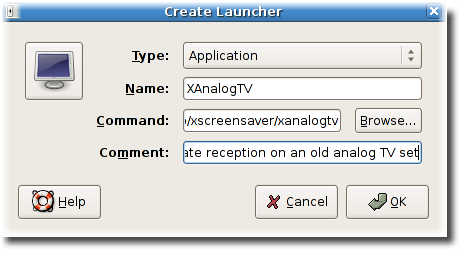Versionsfakta för GNOME 2.16
1. Preparing for the eye candy age
While version 2.16 continues to enhance GNOME with useful features, makes it easier to use, and removes rough edges, it also takes the first steps into the advancing age of eye candy: windows that wobble, vanish, fade, shrink, or explode -- such effects are possible due to ongoing advancements of graphics hardware.
Some of these changes are still under development, and are not enabled by default: you need to use a special configuration to use them. Nevertheless, they provide a peek into the age to come.
Come along on a short journey into the future!
1.1. Avancerade 3D-effekter
Metacity, GNOME's default window manager, makes its first steps into the world of 3D accelerated desktop computing. Many extensions to its compositor engine let your windows wobble, shrink, explode, fade in and out, bounce on window focus, and show other interesting, unusual or funny effects such as having different transparency for different window types like menus, dialogs, and main windows.
Not yet enabled by default, new compositing affects are only available when Metacity is compiled with the special --enable-compositor option. The new compositing features also depend on support for the GLX_texture_from_pixmap extension, which is only available to owners of Intel i830 to i945, and ATI Radeon 7000 to 9250 chips at the present time.
“It's important to note,” says Vincent Untz, member of the GNOME release team, “that it's an ongoing work, and that more will come in 2.18”.
Once Metacity is compiled with the correct option, the effects can be turned on and off without a restart or new login, and applications can take advantage of this. For example, the GNOME terminal can now offer real transparency.
1.2. Cleaner icon theme, Cairo, and Wanda
GNOME 2.16 doesn't just provide eye candy for curious testers; there are also many improvements that are immediately visible: an improved icon theme that follows the Tango style guidelines, a new view on events in the calender module of GNOME's email application, Evolution, and a long overdue face lift for Wanda -- GNOME's cute fortune-telling fish.
GNOME 2.16's new icon theme follows the artwork guidelines proposed by the Tango project, thus supporting a more consistent graphical user interface experience for free and open source software. By now also following the Freedesktop icon naming specification, the GNOME icon theme now also works for applications written for other popular desktops, such as KDE or XFce.

Additionally, the icon theme was also cleared up: many application icons are now shipped with their applications, making it easier to use them from other desktops environments than GNOME. Many icons are also scalable now, meaning you can now change their size on your desktop and they still look good! GNOME's default meta-theme has also gone through a clean-up.
More eye candy is also available in Evolution's Calender module: it now uses Cairo to display a much more appealing view on events: They now have a top header that displays the start time, and the end time if you re-size the event icon. Selected events are now shown using a drop shadow. Cairo is a 2-dimensional graphics library designed to support a number of modern graphics techniques such as stroking, alpha blending and antialiasing.
GNOME's cute little fortune-telling fish, Wanda, received a face lift, too. Being an old companion since the beginning of GNOME, some people wonder if that's one of the most important changes of GNOME 2.16.
2. Feature Enhancements
If you're using a laptop, have problems finding free space on your hard disks, want to customize your menu items, or find it hard to keep up with all your personal information, you'll be happy to upgrade to GNOME 2.16.
2.1. A longer life for your laptop
If you're traveling a lot with your laptop computer, the new integrated power management support of GNOME 2.16 will be a major help: It lets you manage your battery, UPS, and wireless peripherals. It also offers graphs showing you how much power is being used.

Power management is easily controlled via a panel icon. A simple preference dialog lets you adapt to the situations you typically use your GNOME-based computer.
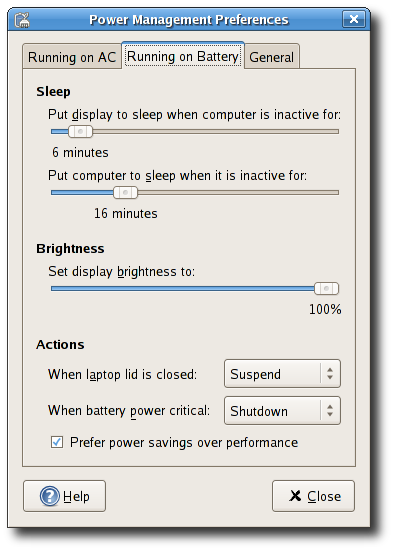
By providing hooks via standardized DBUS methods, other programs are able to interact with power saving and thus reduce the necessity of taking care about power management manually. For example, an application like nautilus could stop the computer sleeping automatically when copying large files, or a service like beagled could use a slow indexing mode when on battery power.
2.2. Note taking made simple
A telephone number, an idea, a meeting with friends -- your life is an endless flow of small pieces of information. Keeping track of it all can be difficult and frustrating but GNOME 2.16 makes it easy with a powerful new note-taking application called Tomboy.
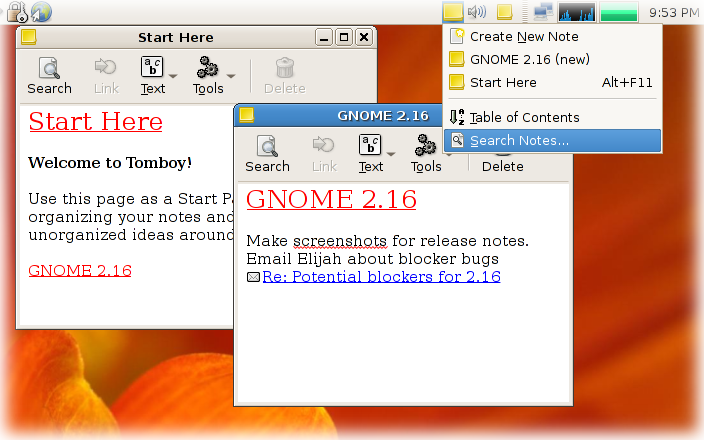
Making a note is as simple as clicking the icon in your panel and selecting 'New note'. But the key to Tomboy's usefulness lies in its ability to relate notes and ideas together: Just highlight a phrase, click the link button and a new note appears. In this way you can organize your ideas in a way that makes sense to you. And links between your ideas won't break, even when renaming and reorganizing them.
2.3. Enhanced menu editing
Menu editing just got even more easier. The old menu editor is replaced with a new one, Alacarte, which is already known to Ubuntu users. Whether you want new menus, new items or separators: Alcarte makes it easier to make changes, and adapt the menu to your liking.
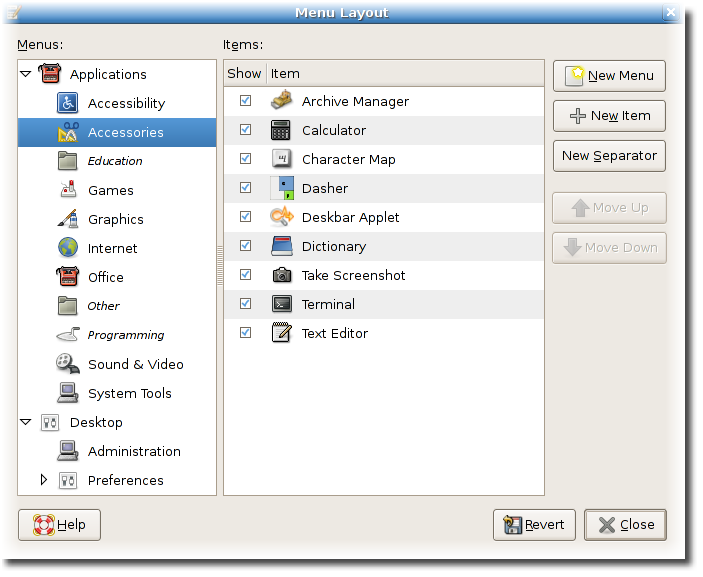
2.4. Finer control of your disk space
If you're one of the people who always seem to struggle with an insufficient amount of free hard disk space, you'll be pleased to know that GNOME 2.16 provides a new tool to get a better overview of your hard disk space: With Baobab, you can analyse how the space is used and find and remove files that take up space. Scan local or remote directories, requested folders or the complete filesystem and Baobab displays an image showing the size of all the directories found.
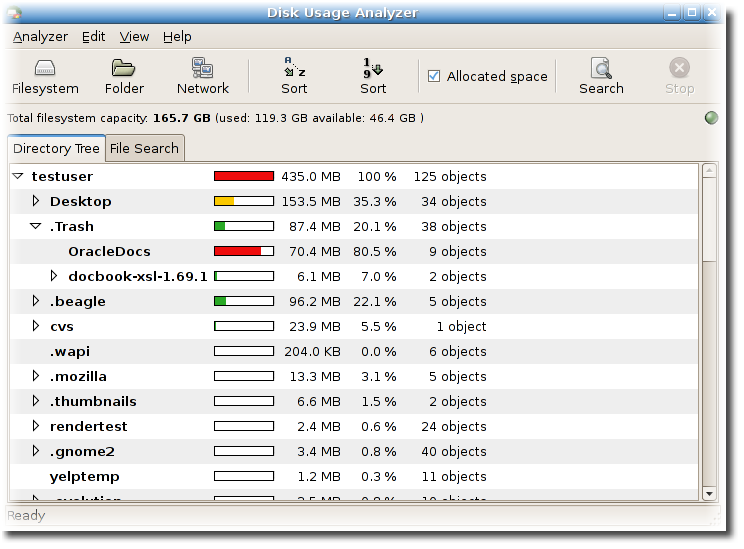
2.5. New screen reader
People with visual impairments will welcome GNOME's new screen reader, Orca. Using the Assistive Technology Service Provider Interface (AT-SPI) to query the display, Orca outputs the content using various combinations of speech synthesis, braille, and magnification. It thus supports all applications and toolkits that support AT-SPI.
2.6. Totem improves media web browsing
Totem, the GNOME video player has new support for reading and writing XSPF playlists, an open standard allowing people to share playlists.
Totem has exciting new features and some important fixes on its browser plugin, making Totem in conjunction with your web browser pure pleasure. Notable features are its ability to happily interoperate with web pages that embed Real and Windows media players even if the page specifically checks for Windows Media or Real Player. Even the javascript interfaces around them will work. Totem now allows you to listen to music in the background on web pages that support it as well.
2.7. Many small but useful changes
- You can now check the spelling of the text entered in the Epiphany web browser.
- You can now switch between the open windows of a certain application by using the shortcut Alt+F6. Of course, you can still use the short cut Alt+Tab to switch between the open windows on a work space.
- You can now move applications between different workspaces by dragging their taskbar icon onto the wanted workspace.
- You can now spot password-protected files in archives more easily due to an new emblem shown for these files.
- You can now preview a screensaver in fullscreen.
- You can now burn DVDs directly with Nautilus CD Burner; there's no need to make an image anymore.
- You can now also use Reminder Notes from existing GroupWise accounts by using Evolution.
3. Usability improvements
Ease of use is one of the highest priorities of GNOME, and contributors continue to ensure that GNOME adheres to the highest standards of software usability. GNOME 2.16 includes updates that simplify changing file permissions, reporting bugs, using the Deskbar applet, and creating application launchers.
3.1. Change file permissions comfortably
Sometimes it's necessary to change the file permissions of everything within a certain folder. The Nautilus File Manager now supports this by right-clicking a folder and selecting .
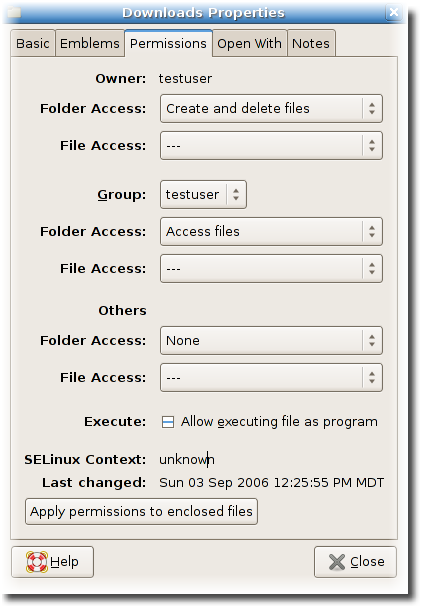
GNOME 2.16 also introduces fine-grained control of file permissions with support for access control lists and Security-enhanced Linux (SELinux) attributes.
3.2. Simplified bug reporting
To ensure that GNOME bugs are resolved quickly, developers depend on bug reports provided by users. To simplify the process of filing bug reports, the Bug-Buddy utility is now automatically launched when a GNOME application crashes. To help users save time, the new version asks fewer questions and displays everything in a single window.
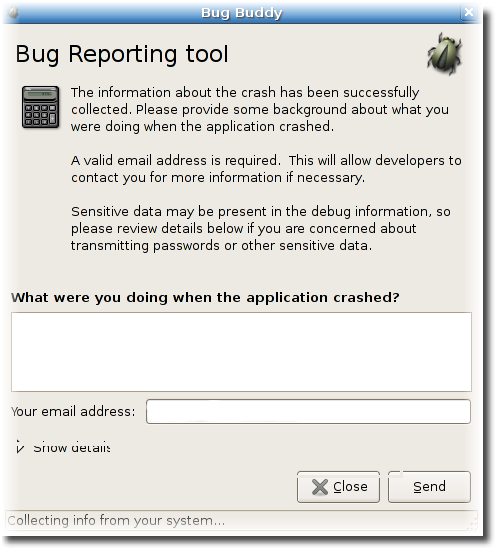
3.3. Improvements to Deskbar
Now Deskbar, a powerful utility for searching your files and the web, is even faster to use and takes up less space on your screen. Pressing Alt+F3 (or clicking on its icon) allows you to directly enter search terms -- your hands can remain on the keyboard all the time.

4. Code cleanups and backend improvements
- 4.1. Upgrade to GTK+ 2.10
- 4.2. GTK and GNOME get sharp
- 4.3. New Bug-buddy backend
- 4.4. Unicode 5.0 support
- 4.5. Removals and other notes
4.1. Upgrade to GTK+ 2.10
GNOME 2.16 now depends on GTK+ 2.10, making use of many improvements that were made available by Project Ridley; an effort to consolidate a number of GNOME libraries into GTK+.
One of the first benefits made available to GNOME users is the new printing functionality of GTK+ 2.10: It features a high level, platform-independent API, GtkPrintOperation, that also includes a new printing dialog. A low-level, UNIX-specific API is available as well that currently supports CUPS and lpr for printing.

Many GNOME applications were ported to use the new printing functionality, such as the document viewer Evince, the web browser Ephiphany, and the help browser Yelp.
This also marks the start of deprecating the previously used libraries libgnomeprint and libgnomeprintui: External projects are encouraged to use the new functionality provided by GTK+ 2.10.
Another important improvement introduced by GTK+ 2.10 is the new API, GtkRecent: It manages a single list of recently opened files and documents. Among the GNOME applications using the new functionality are the panel, the file manager (Nautilus), the document viewer (Evince), and the text editor (Gedit).
The file chooser dialog has also been improved: the location entry (previously opened by using Ctrl+L) has been integrated and the dialog as a whole remains responsive even when performing time-consuming file operations.
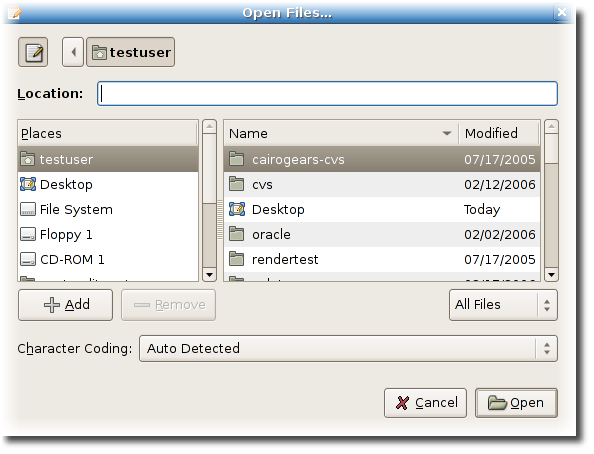
GTK+ 2.10 provides the gtk-touchscreen-mode mode controlling a number of changes that make GTK+ work better on touchscreens, which are widely used on mobile and embedded devices.
Several other improvements made available by GTK+ 2.10 are used throughout the desktop: New widgets to display clickable hyperlinks, or to create multi-step wizards, for example and better drag-and-drop support in notebooks allowing tabs to be reordered, moved between notebooks, and made into windows by dragging to the desktop.
4.2. GTK and GNOME get sharp
GNOME 2.16 now offers bindings to GTK+ and GNOME libraries for fans of the C# (C sharp) programming language. This also means that the development framework Mono is a dependency of the GNOME bindings.
Additionally, software written in C# can be proposed as new modules for later GNOME releases. However, existing GNOME modules need to go through the proposal process again if they gain a new dependency on GTK# and/or Mono.
4.3. New Bug-buddy backend
GNOME's bug reporting tool, Bug-buddy, now uses an XML-RPC protocol and no longer requires that the user have sendmail installed. As a result of this change, projects using Bug-buddy must have the correct information in their application's .desktop file.
The previous way to create bug reports (sendmail method) will still be supported for one year. After that, users of old Bug-Buddy versions won't be able to file bug reports anymore.
4.4. Unicode 5.0 support
GNOME 2.16 will be the world's first desktop release that features support for the Unicode Character Database (UCD), version 5.0, which defines more than 99,000 characters for the languages of the world. The improvements are built into GNOME libraries GLib and Pango, and are thus available to all other open source and free software projects that use these libraries.
5. Internationalisering
Thanks to members of the worldwide GNOME Translation Project, under the leadership of Christian Rose and Danilo Šegan, GNOME 2.16 offers support for 54 languages (at least 80 percent of strings translated).
Språk som stöds:
- Albanska
- Baskiska
- Bengali
- Brazilian Portuguese
- Bulgariska
- Catalan
- Chinese (Hong Kong)
- Chinese (Taiwan)
- Chinese Simplified
- Tjeckiska
- Danska
- Dutch
- Dzongkha
- Engelska
- Estonian
- Finska
- Franska
- Galician
- Tyska
- Grekiska
- Gujarati
- Hebreiska
- Hindi
- Hungarian
- Indian Bengali
- Indonesian
- Italienska
- Japanska
- Koreanska
- Latvian
- Lithuanian
- Macedonian
- Malayalam
- Nepali
- Norska (bokmål)
- Norska (nynorsk)
- Oriya
- Persiska
- Polska
- Portugisiska
- Punjabi
- Rumänska
- Ryska
- Serbiska
- Slovakiska
- Slovenska
- Spanska
- Svenska
- Tamil
- Thai
- Turkiska
- Ukrainian
- Vietnamesiska
- Welsh
Note that Dzongka, Hebrew Indian Bengali, Latvian, Malayalam, Norwegian Nynorsk, Oriya, Slovenian and Tamil are new supported languages in GNOME 2.16, thanks to the hard work of their translators. Also noteworthy are that British and Canadian English are supported.
Många andra språk stöds delvis, med mer än hälften av sina strängar översatta.
6. Se fram emot GNOME 2.18
Naturally, development doesn't stop with GNOME 2.16. Six months from the day that GNOME 2.16 is released GNOME 2.18 will follow and build on the fantastic base of its predecessor.
Saker att se fram emot i GNOME 2.18 är bland annat:
- Uppgradering av bugzilla.gnome.org till Bugzilla 3.0.
- Change Bug-Buddy to work with any Bugzilla 3.0+ bugtracker (if possible)
More on the development roadmap of GNOME 2.18 will appear shortly as development starts getting under way. Watch for details on our development page.
6.1. Hur man involverar sig
Att hjälpa GNOME är en belönande, tillfredsställande och positiv upplevelse. Du kommer att gå med bland hundratals dedicerade entusiaster från alla sidor av livet och alla platser på jorden. Skickliga och motiverade bidragsgivare till GNOME kan hitta nya öppna dörrar och möjligheter för dem i form av erkännande, talframträdanden och givande anställningar.
Your contribution to GNOME can be as simple as filing good bug reports in our bug tracking system, Bugzilla. The simple bug assistant will be able to guide you through filing your first bugs with us. Become a Friend of GNOME to help us move forward.
A lot of exciting progress is being made daily in our active developer groups - accessibility, documentation, usability, translation, web, testing, graphics, performance, desktop and platform development.
Gå med oss idag och se vilken skillnad du kan göra.
A. Tack till
Den här versionsfaktan blev författad av Vincent Untz, Quim Gil, SegPhault, John Williams och Brent Smith med stor hjälp från GNOME-gemenskapen. På gemenskapens vägnar ger vi vårt varmaste tack till utvecklarna och bidragsgivarna som har gjort denna GNOME-utgåva möjlig.
Detta arbete kan fritt översättas till valfritt språk. Om du önskar översätta det till ditt språk, vänligen kontakta GNOME Translation Project.

